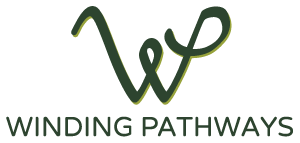BASIC BIRDFEEDNG IN A NUTSHELL
One late October afternoon we set up a few bird feeders in the back yard. Within minutes a procession of nuthatches and chickadees began feasting on sunflower seeds. It amazed us how quickly the birds were able to locate seeds. Gifted with amazing eyesight and intimate knowledge of their territory, birds watch every move humans make and seize any opportunity for free breakfast.
Setting up a backyard feeder brings colorful wildlife to brighten otherwise dreary winter days. Bird feeding is amazingly popular. Upwards of half of American households put out at least a few seeds. It is an outstanding activity to involve a child in.
Bird feeding can be amazingly simple and inexpensive or complex and costly. This blog covers just the very basics. Specific bird feeding tips and bird information will be posted often on the subscription part of the Winding Pathways Website.
Sometimes people wonder why few birds visit their feeders. Usually, it’s simply because their yard is devoid of diverse plants that support different bird species. An array of trees, shrubs and ground level plants provide birds with food and places to hide. Anyone wishing to attract a diversity of birds should landscape for them. That can be a multi-year project. In the short term putting some discarded Christmas trees or brush in monoculture yard will help attract them.
Offering several types of food in a variety of feeders also enhances success. One of the best feeders is a picnic table. Just scatter sunflower seeds on it. Cardinals, in particular, like to feed on a large flat surface and rarely visit silo type hanging feeders. We put out suet for woodpeckers, sunflower seed for a diversity of species, corn for squirrels, millet for doves, and corn for our squirrel friends. But, if we had to choose just one type of seed and feeder they would be black oil sunflower scattered on the picnic table!
Here are some bird feeding tips:
• Visit a specialty bird feeding store. These are becoming increasingly common and sell a diversity of seeds, feeders and accessories. But, more important, sales people will share comprehensive knowledge about local birds and how to best attract them. Big box stores sell seeds and feeders, but offer sparse education.
• Be wary of seed mixes, especially inexpensive ones. Often they are packed with milo, a seed few birds like to eat.
• Keep seed fresh and safe from rodents. Old stale seed won’t attract birds. Store it in a metal garbage can with tight lid to help keep the seed fresh and exclude mice.
• Keep feeders clean. Give them a good scrubbing every once in a while.
• Buy quality feeders. Quality brands, like Aspects and Droll Yankee, make high quality feeders that are easy to clean and resist breaking. If one does break the company will replace it.
• Feed up, down and around. Do some reading about birds and watch closely. You’ll notice that some birds, like mourning doves and juncos, prefer feeding on the ground and are rarely on feeders, while chickadees and nuthatches would rather visit an elevated feeder. Put the types of seed each species prefers where it likes to feed. For example, spread millet on the ground for doves and put sunflower seed in feeders.
• Don’t get too discouraged by squirrels. They are fascinating animals with amusing antics. Lots of websites and books give tips for excluding them from feeders, but we choose to toss some corn on the ground for them to enjoy.
• Read and Observe. Birds, even common species, are fascinating. They are often the first portal to nature that kids see. A pair of binoculars can help viewing, and many resources are available online and at the library.
• Connect with others who love birds. The local bird feeding store can help you find others who feed birds. Probably the best online source of bird information comes from the Cornell University Laboratory of Ornithology.
• Don’t worry if you take a winter vacation and have no one to stock the feeders. Birds move around through the day and feed at many places. If they find your feeder empty they’ll move on but will be back soon after you return home and fill up your feeders.
Check out the subscription area of the Winding Pathways Website for periodic updates on bird feeding.
